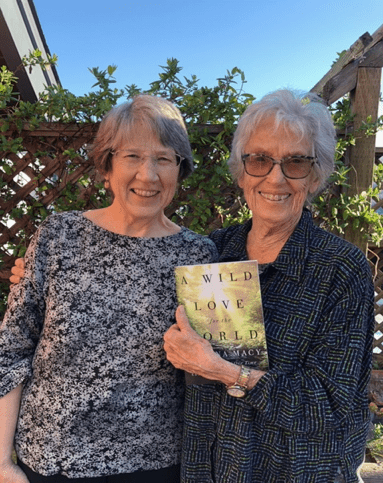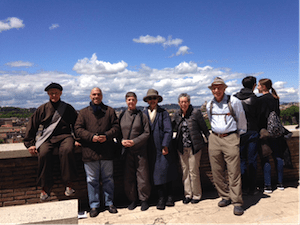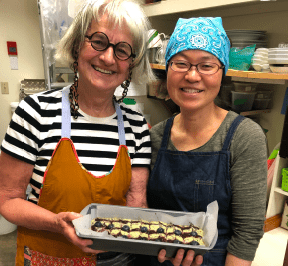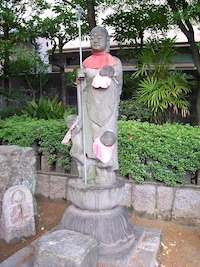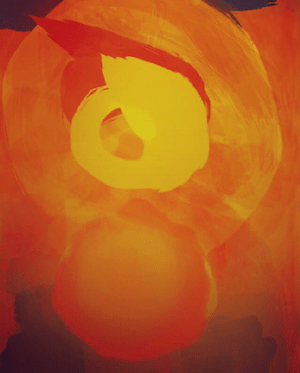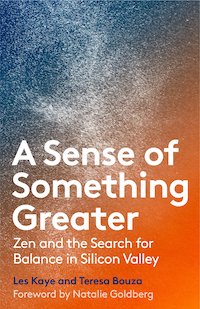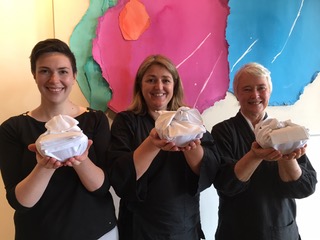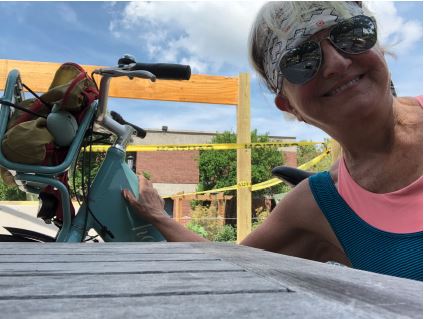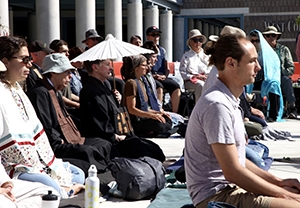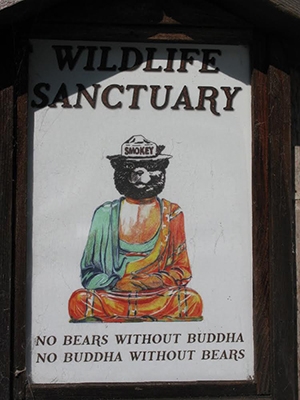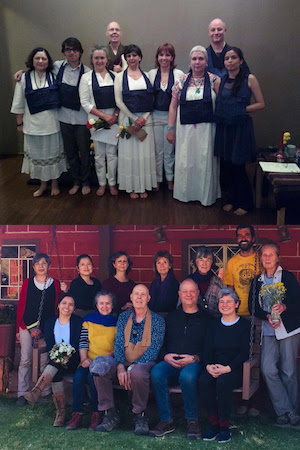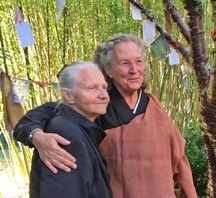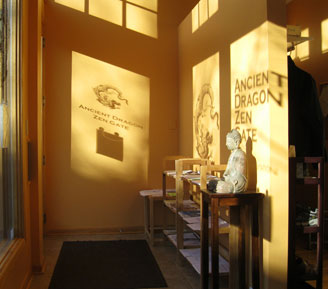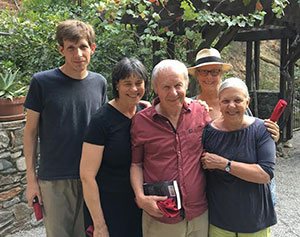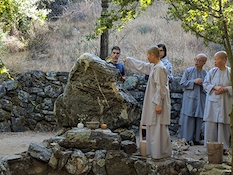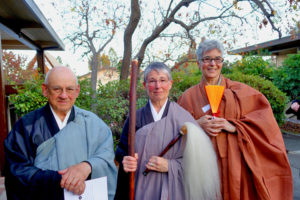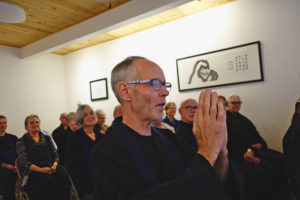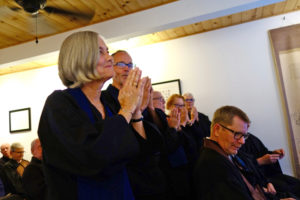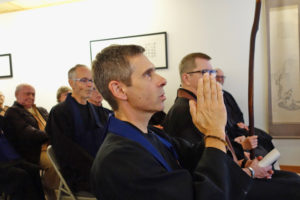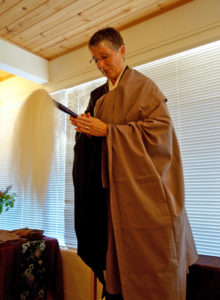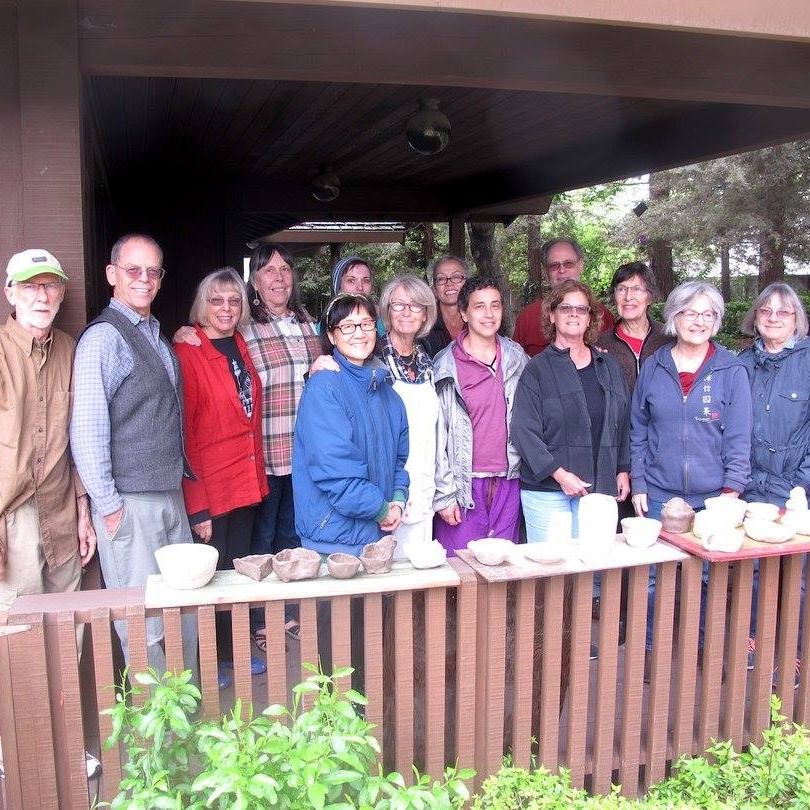Tova Green’s recent visit to Texas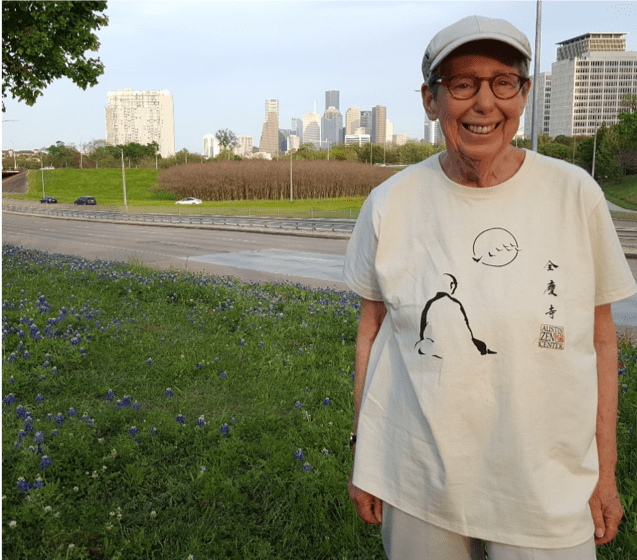
Tova Green seeing bluebonnets at the Buffalo Bayou Dear distantly intimate friends (a phrase borrowed from Kevin Heffernan of Richmond, Virginia Zen Center), I returned from visiting San Antonio, Austin, and Houston Zen Centers on March 17th, as leaders at all three centers were planning how best to respond to the Covid-19 virus. At Houston Zen Center, Abbot Gaelyn Godwin livestreamed my dharma talk through her computer, the first livestreamed talk HZC had offered. Here’s a link to that talk. I met with sangha leaders, board members, and practitioners at all three centers, and enjoyed The city I returned to had just begun to shelter in place. The airport was nearly deserted. San Francisco Zen Center had already closed to the public. I began two weeks of quarantine, which ended last night. |
On the Road: Visiting and Sharing Mid-Stream, by Marcia Lieberman
This summer, Marcia Lieberman went back on the road to visit Branching Streams Affiliate Sanghas in Arcata, Vancouver, and Calgary. She has put together a written and pictorial account summary of her fourth summer teaching on the road. |
Jizo Ceremony Training: March 29-30, 2019, Green Gulch Farm Zen Center
Next March, two Branching Streams Teachers, Hoka Chris Fortin of Dharma Heart Zen, and Dojin Sarah Emerson of Stone Creek Zen Center, along with Reverend Jennifer Block will be providing training in offering and officiating at a Jizo Ceremony. The traditional Jizo Ceremony is a Japanese Zen ritual for loved ones, particularly children, who have died. Since being offered in the U.S., this ceremony has been evolving, both for Zen practitioners and those in the community beyond, as a deep and meaningful container for those grieving both the loss of a child, and has also been adapted for those grieving losses of loved ones more generally. This will be a two day training. The first 1 ½ days will look at the history of the Jizo ceremony, it’s tradition, and how it is currently being practiced and offered in the U.S.. We learn about one version of the ceremony itself, and the ways it can be adapted to different circumstances, losses and environments. We will also look at fundamental aspects of accompanying grief and tools and skills for this work, which includes conscious engagement with the grief each of us carries and how we are holding it. On the second day, in the afternoon, we will offer a Jizo Ceremony for the general public, which training participants are encouraged to attend as well. This will be an opportunity to participate in and witness the ceremony itself. It is not necessary for participants to have personally experienced the loss of a child or loved one, but just that everyone have a willingness to enter the realm of grief and it’s accompanying pain, and to learn about and honor this ceremony, its history and particular forms and contemporary manifestations. This training is open to ordained priests, religions leaders, grief counselors and chaplains; and may also be attended by anyone else who feels a calling to participate in learning about this ceremony, with instructor permission. With more questions, please contact Sarah at: dojinemerson@gmail.com |
New Book by Les Kaye and Teresa Bouza: A Sense of Something Greater: Zen and the Search for Balance in Silicon Valley
Les Kaye of Kannon Do Zen Center has just coauthored a book with Teresa Bouza. From the press release: A Sense of Something Greater goes deeper than the current mindfulness trend, into the heart of Zen practice. For Les Kaye, Zen is more than awareness–it’s also “the continued determination to be authentic in relationships, to create meaningful, intimate, intentional bonds with people, things, and the environment.” Kaye’s teachings are paired with interviews with current tech employees and Zen practitioners, conducted by journalist Teresa Bouza. A Sense of Something Greater is an essential book for business leaders, mindfulness meditators, and Zen practitioners alike. |
On the Road: Visiting and Sharing Mid-StreamThis summer, Marcia Lieberman went back on the road to visit Branching Streams Affiliate Sanghas in New Orleans and Washington, D.C. She has put together a written and pictorial account summary of this, her third summer teaching on the road. |
Montaña Despierta 10 Year Anniversary AlbumMontaña Despierta, our sister Affiliate in Xalapa, Mexico, led by Sergio Stern, recently celebrated their 10 year anniversary. They compiled a photo album as part of the Celebration. Each of the images is “clickable” to see it full size. Congratulations, Montaña Despierta, on 10 years of sincere practice! |
|
From All Beings Zen Sangha: Relief from ScreensNPR recently did a segment titled: “Many Look to Buddhism for Sanctuary from an Over-connected World,” which prominently featured one of our sister Affiliates, All Beings Zen Sangha in Washington, DC. Read or listen to the story here. |
One of the First Branching StreamsKannon Do, Mountain View, California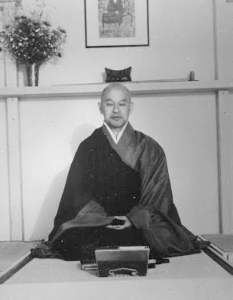 One of Suzuki Roshi’s original “extensions” of Zen practice outside of San Francisco was a sitting group in Los Altos, which began in the mid-1960s. As one of the very first “branching streams,” this center, in the heart of what would soon be known as Silicon Valley, has been providing opportunities for comtemplative practice for the San Francisco mid-peninsula and South Bay for over fifty years. 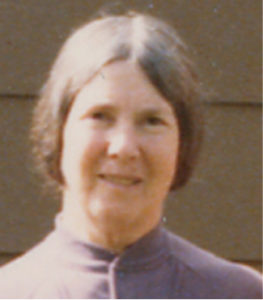 The Los Altos community established a daily practice of zazen that was made possible by the generosity of one of the Sangha members, Marian Derby. Marian generously insisted that the garage of her home be converted into a zendo. Suzuki-roshi and the Sangha did the construction. There was room for seventeen cushions. As seventeen is the number of syllables in a haiku poem, they named the new center Haiku Zendo. (continue reading) |
The Flourishing of Suzuki Roshi’s Way – Branching Streams Affiliate Sanghasby Steve Weintraub The following article by Steve Weintraub was recently published in San Francisco Zen Center’s Sangha News. Here is the complete article, which gives some history and news about Branching Streams. Suzuki Roshi’s Way is flourishing. San Francisco Zen Center’s “Branching Streams” Network of Affiliate Sanghas is now comprised of 75 Dharma centers, ranging in size from meeting-once-a-week small sitting groups to established centers with their own Abbesses/Abbots, Boards of Directors, dedicated property, and numerous weekly Dharma offerings. There are now 65 Affiliates in the United States and another 10 in Europe and Central and South America. Branching Streams—the name comes from a line in a poem by eighth century Zen Master Sekito Kisen—grew out of a recognition, in the mid-80s, that sanghas affiliated with San Francisco Zen Center, around the country and around the globe, were burgeoning, and that they both wanted and would benefit from a closer connection to SFZC and to each other. The mission of the Branching Streams programs is to encourage and support the development of these Affiliate sanghas.
Every other year we hold a large “Gathering of the Branching Streams.” We completed such a conference in early September 2017 in Chicago, hosted by the thriving affiliate, Ancient Dragon Zen Gate. 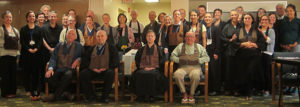 Forty Branching Streams Leaders were in attendance; we practiced zazen together, had meals together, and informal time. Our two main topics for this particular gathering were the “right use of power” and “Zen practice and social engagement.” There were intense discussions in group sessions both large and small, on these and related topics. People left the Conference feeling more connected to the Dharma and to each other; energized and encouraged. In addition to the biennial conference, other programs that have been developed in recent years as part of the Branching Streams initiative include:
Over the past few years various Affiliates have submitted Profiles of their groups for publication in Sangha News and on the Branching Streams websites. To give a sense of what the Affiliate groups are like, see these three profiles:
|
Vietnamese Nuns Visit Tassajaraby Keiryu Liên Shutt Liên Shutt is the Teacher of our sister Affiliate sangha, Access to Zen. She has transmission in the Suzuki Roshi lineage through Blanche Hartmann but also studied for a number of years with a Vietnamese zen teacher, Ni Su Thuan Tue. Recently she visited Tassajara with that Ni Su Tue and sent us this report. |
New Web Coordinator
|
New book on Dogen’s Being Time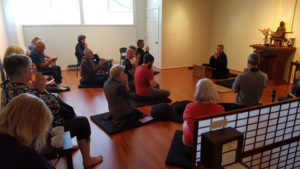 Shinshu Roberts, co-head teacher at Branching Streams sangha Ocean Gate Zen Center, (more on OGZC here ) has authored a book on Dogen’s Shobogenzo fascicle, Uji, Being-Time. Shinshu’s book has received wonderful pre-publication praise from a number of teachers and practitioners. Here is one: “In Being-Time, Shinshu Roberts gives us a wise, kind and wonderfully patient guide to one of Dogen’s most important and enigmatic texts. Now, more than ever, these profound old teachings are relevant to our lives in the here and now. This is a book I will treasure and return to time and time again.” — Ruth Ozeki, author of A Tale for the Time Being. Shinshu’s book will be published in March, by Wisdom Publications (and is currently available for pre-order on Amazon). |
eZendo and Micro Zendo PracticeProfile: Open Zen Community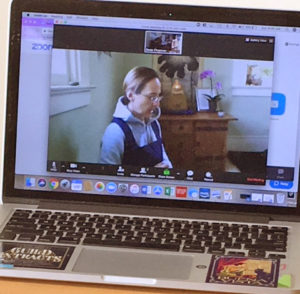 Open Zen Community is a small and dedicated Sangha of lay practitioners in the San Francisco Bay Area. All of us work full-time as part of our Zen practice. We meet online each evening to chant the refuges together at 8:25 p.m. and meet online for zazen and service at 9 a.m. on Saturday and Sunday. We sit together body-to-body for one-half day every second Sunday and hold zazen, kinhin and a Dharma talk on the fourth Sunday of each month at 3 p.m. Our particular emphasis is awakening where you are, as you are, and we examine the question of awakening in lay American life often. All are welcome to join in this dynamic practice of everyday life. Please visit our website at http://www.open-zen.org.
|
On the Road: Visiting and Sharing Mid-StreamChapter 2, Summer 2017
|
Compassionate Presence in Each MomentProfile: Santa Cruz Zen Center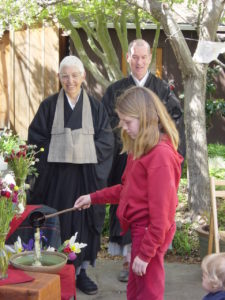 In 1967 Kobun Chino Roshi, a Japanese Zen priest, came to San Francisco in response to an invitation from Suzuki Roshi to serve as his assistant at Tassajara for three years. Shortly after leaving Tassajara in 1970, Kobun moved to Los Altos and began teaching there at the Haiku Zendo. Also at this time he began a weekly zazen group in Santa Cruz. In 1972 the current Santa Cruz Zen Center at 113 and 115 School Street was offered as a practice place for Kobun Chino and his students. For many years he gave a weekly evening Dharma talk there, until leaving to teach in New Mexico, Colorado, and overseas. (continues) |
Reminiscences about Suzuki RoshiAt one of the evening sessions at the May 2015 Branching Streams meeting, some of us who had begun practicing when Suzuki Roshi was alive reminisced about our practice with him. It was recorded and you can download the audio here. |
About Valley Streams Zen SanghaValley Streams’ guiding teacher is Abbot Myo Denis Lahey, whose home temple is Hartford Street Zen Center, located in San Francisco’s Castro neighborhood. Rev. Myo is a fully entrusted Zen teacher, having received Dharma transmission from Tenshin Reb Anderson, Senior Dharma Teacher at San Francisco Zen Center. Locally, Rev. Jim Hare serves as Practice Leader and co-leads our practice in consultation with our guiding teacher and our board of directors. Jim has practiced Zen for 35 years, was head student during the spring 2002 practice period at Green Gulch, and was recently ordained by Rev. Myo Lahey. For more information visit Valley Streams Zen Sangha.Visit the sangha at: |

